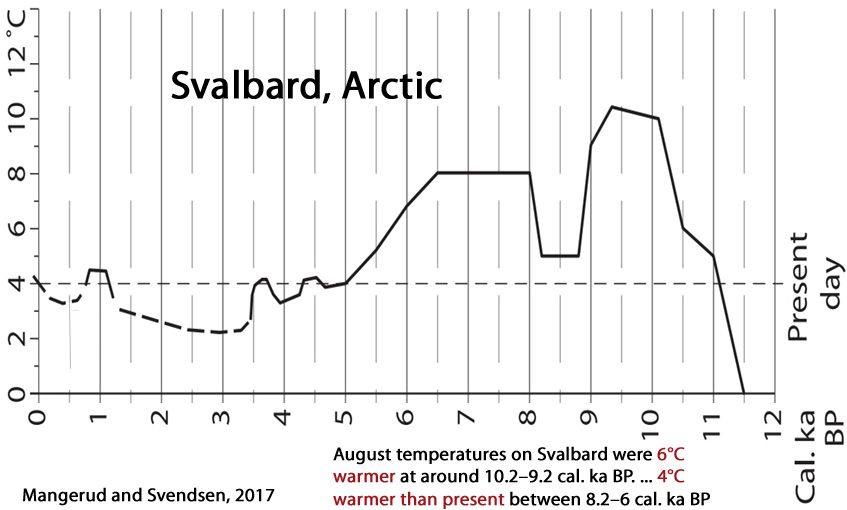Mangerud and Svendsen, 2017
“Shallow marine molluscs that are today extinct close to Svalbard, because of the cold climate, are found in deposits there dating to the early Holocene. The most warmth-demanding species found, Zirfaea crispata, currently has a northern limit 1000 km farther south, indicating that August temperatures on Svalbard were 6°C warmer at around 10.2–9.2 cal. ka BP [10,200 to 9,200 years ago], when this species lived there. … After 8.2 cal. ka, the climate around Svalbard warmed again, and although it did not reach the same peak in temperatures as prior to 9 ka, it was nevertheless some 4°C warmer than present between 8.2 and 6 cal. ka BP. Thereafter, a gradual cooling brought temperatures to the present level at about 4.5 cal. ka BP. The warm early-Holocene climate around Svalbard was driven primarily by higher insolation and greater influx of warm Atlantic Water, but feedback processes further influenced the regional climate.”

- Forums
- Science & Medicine
- Greenland Cooling Since 2005
Greenland Cooling Since 2005, page-7
Featured News
Featured News
The Watchlist
FBM
FUTURE BATTERY MINERALS LIMITED
Nick Rathjen, MD & CEO
Nick Rathjen
MD & CEO
Previous Video
Next Video
SPONSORED BY The Market Online




